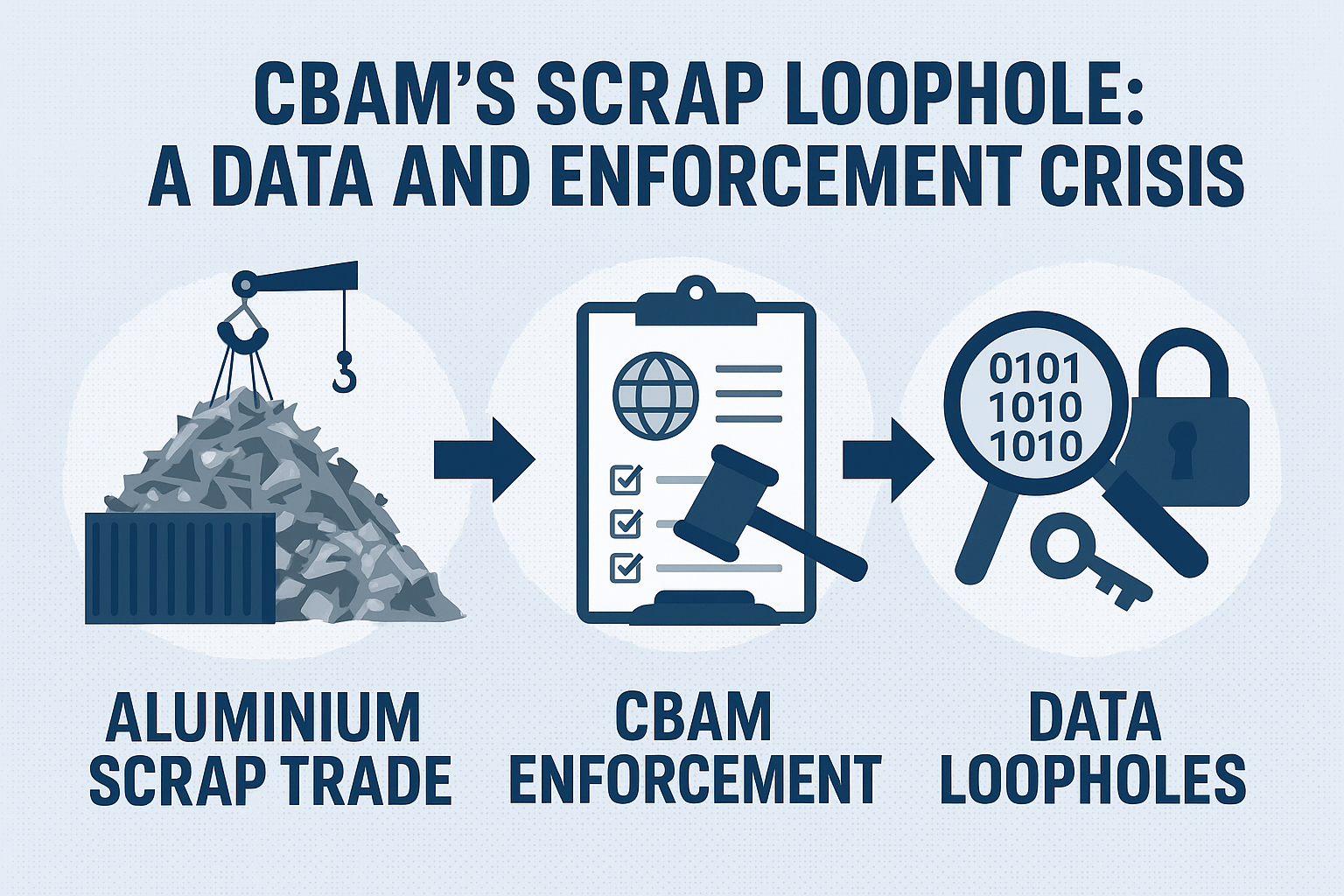

For all its ambition, the European Union’s Carbon Border Adjustment Mechanism (CBAM) suffers from a problem not uncommon in modern climate regulation: data complexity outpacing policy design. In our previous editorial derived from the same study by European Aluminium, we have explored how aluminium scrap has become a billion-euro backdoor for foreign producers to undercut CBAM fees and outprice European producers. But underneath the circumvention tactics lies an even bigger story, one of missing traceability, legal grey zones, and statistical blind spots that could seriously undermine CBAM’s integrity over the next decade.

This time, we delve deeper into why CBAM’s loophole isn’t just about policy, it’s about enforcement infrastructure, legal classification, and the technical debt of global trade accounting.
When carbon math fails
One of the most striking omissions in CBAM’s current design is the lack of embedded emissions assignment to aluminium scrap, both pre-consumer and post-consumer. While that may seem like a reasonable simplification at first glance (scrap is recycled, after all), it completely ignores the carbon inheritance of the original metal.
Even worse, CBAM doesn’t distinguish between scrap types, nor does the international trade classification system (HS Code 760200). That code, used globally to record aluminium scrap flows, makes no distinction between pre-consumer scrap, post-consumer scrap, or process scrap. As a result, policymakers and customs officers are flying blind.
Also read: India’s Vedanta Aluminium has its plan ready to face the EU’s CBAM challenge
There’s no way to verify claims of scrap content in imported goods or trace their origin without robust, installation-level emissions disclosure and tracking systems, which currently do not exist.
The phantom material
Responses








